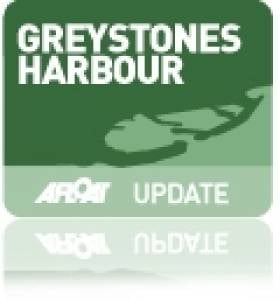Displaying items by tag: Laser Picos
Wicklow Brownies Get A Taste of Sailing at Greystones Harbour
#greystonesharbour – Delgany Brownies, Greystones Brownies and some of the Greystones Guides took part in a sailing taster day at Greystones Sailing Club on Sunday 5th October. The 40 girls spent half the day sailing Laser Picos with instructors outside the harbour learning how to sail while having lots of fun - the giggles and screams of delight could be heard by on lookers walking the newly opened North Pier. The girls loved their experience on the water with almost all of them having never sailed before. Event organiser and Senior Instructor Emma Hett said it was a "privilege to be able to facilitate the girls going sailing for the first time and I hope this will be the start of many more collaborative sessions between local community groups and Greystones Sailing Club." Emma also thanked the sailing club for hosting such a successful event and giving the girls an experience they will never forget.
The second half of the day was spent on shore with the girls completing their Irish Girl Guide Conservation badge and Water Safety badge. The girls completed a litter sweep of the local area collecting five large bags of rubbish. After the sweep the girls came back inside to learn about protected species in Ireland and make informative posters from recycled materials to illustrate all they had learned. Instructors Sarah Hoolahan (Greystones Sailing Club), Conor Duff-Lennon (Greystones Sailing Club) and Triona Harvey (Wexford Harbour Boat and Tennis Club) all said they learnt lots about conservation and the importance of teaching these issues to the young girls. All the instructors said that while the girls had fun they too had a blast and were delighted to be involved in the day. Safety Coordinate and Senior Instructor Steven Tyner "it was great to have so many girls come down to go sailing and see their excitement on the water in boats."
At the end of the day Brownies, parents, instructors and club members all gathered together in Greystones Sailing Club for a BBQ with special thanks to The Steak Shop, Greystones for part-sponsoring the costs of the burgers. David Nixon, Greystones Sailing Club Secretary and Fiachra Etchingham, Greystones Sailing Club Trustee both welcomed new members to the club and re-iterated Greystones Sailing Club's openness to new members, both old and young.
The day was run completely by volunteers giving up their time and a special thanks has to go to the instructors who all volunteered their Sunday to give back to their local communities. Finally a special thanks must go to Cllr Grainne McLoughlin who sought sponsorship for lunches for all the instructors and also homemade chocolate brownies for them all which went down a treat.























